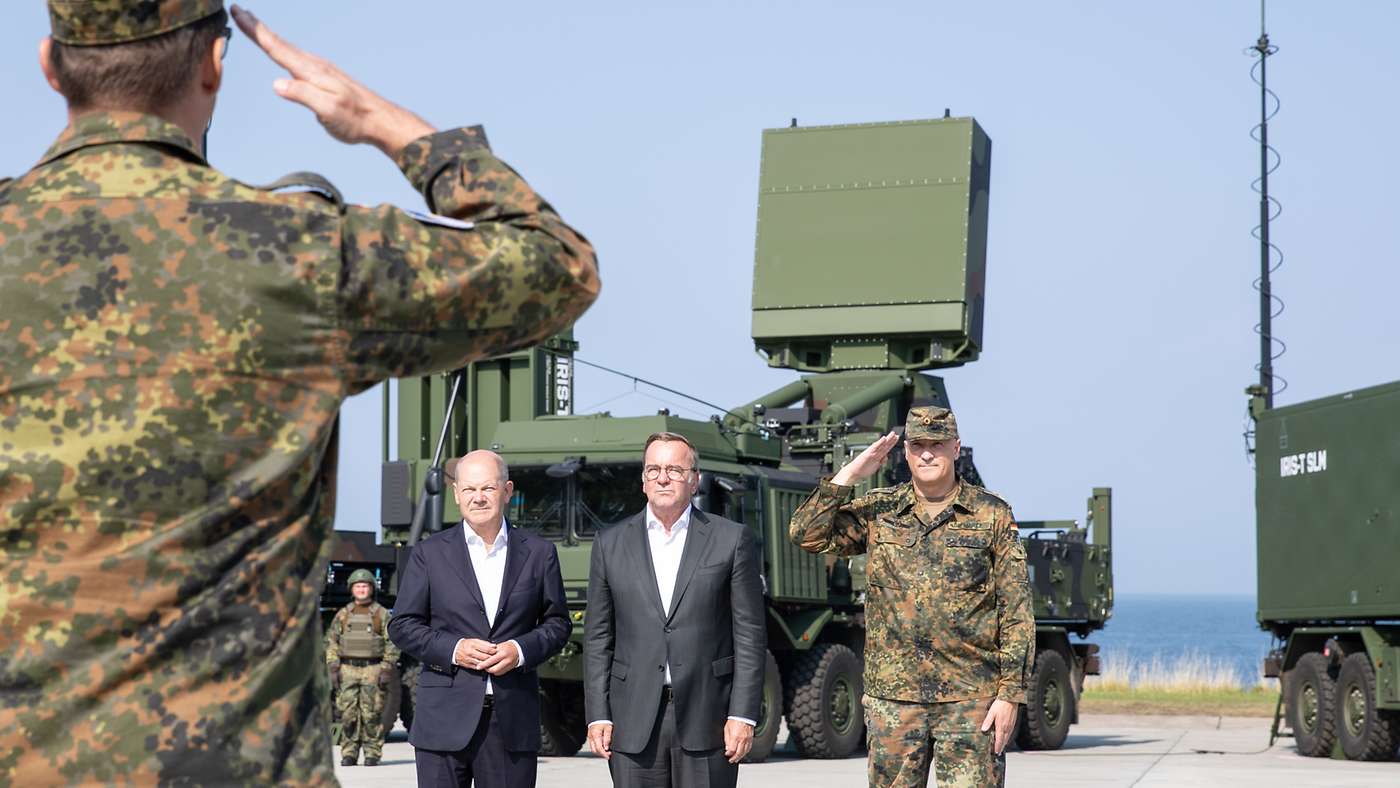The German Air Force (Luftwaffe) has begun the deployment of its advanced air defense system, the IRIS-T SLM (Infra-Red Imaging System–Tail/Thrust Vector-Controlled, Surface-Launched Medium Range). Developed by Diehl Defence in collaboration with international partners, this state-of-the-art system has already proven its capabilities in Ukraine, where it is being used in live operations. In a formal ceremony attended by German Chancellor Olaf Scholz and Defense Minister Boris Pistorius, the first unit of the IRIS-T SLM system was handed over to troops in Todendorf, Schleswig-Holstein. The deployment of additional units will follow in the coming years. With the achievement of Initial Operational Capability (IOC), the Luftwaffe has significantly increased its air defense capabilities both in quality and speed.
The IRIS-T SLM system includes radar and command elements, multiple launchers for IRIS-T missiles, a mobile maintenance component, and a transport vehicle for reloading launch containers. This versatile system is capable of engaging hostile aircraft, helicopters, cruise missiles, and drones at altitudes of up to 20 kilometers and at ranges of 40 kilometers. Germany plans to acquire six systems by 2027, which will serve as a key component of its future modular air defense strategy, supplementing the existing Patriot missile systems. The growing threat from the air, highlighted by Russia’s ongoing war in Ukraine, has emphasized the need for comprehensive ground-based air defenses to protect Germany, its population, and critical infrastructure such as power plants, ports, and bridges.

The evolving nature of aerial threats, ranging from drones and fighter jets to ballistic missiles, requires a flexible and dynamic defense system. The IRIS-T SLM, with its 360-degree engagement capability, was designed precisely to meet these challenges. Initially developed as an air-launched missile for fighter aircraft, the IRIS-T has been adapted for surface launch to provide robust, ground-based protection. The system’s infrared-guided missiles (LFK) feature highly sensitive, advanced infrared seekers capable of autonomously tracking targets, while also being remotely controlled from the ground for coordination with other air defense systems. The missiles are designed to defeat electronic countermeasures and operate effectively in challenging electromagnetic environments.
Germany’s investment in IRIS-T SLM underscores its commitment to strengthening both national and European air defense in an increasingly complex and dangerous global security environment. Diehl Defence is working on an extended-range variant, the IRIS-T SLX, which will engage threats at distances of up to 80 kilometers and altitudes of up to 30 kilometers. This future enhancement will further improve Germany’s air defense capabilities. The IRIS-T SLM system is also a central pillar of the European Sky Shield Initiative (ESSI), spearheaded by Germany to enhance NATO’s air defense capabilities through joint procurement and operational synergies with European partners. The first IRIS-T SLM unit will be stationed near the Baltic Sea in Todendorf, where Air Defense Missile Group 61 will be equipped with the system, tasked with protecting mobile land forces and key assets from aerial threats.
















